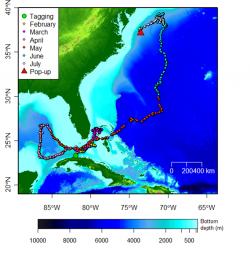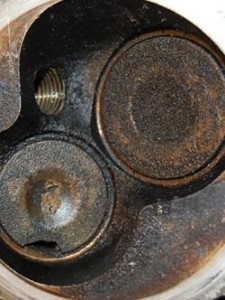Drunk Boating Kills
As Labor Day approaches—one of the busiest boating days of the year—the Coast Guard is issuing a somber warning: Drunk Boating Kills.
By Petty Officer 2nd Class Cynthia Oldham
from The Fishing Wire
Drunken boating destroys lives.
A Coast Guard Station Boston response boat crew is underway, Friday, July 3, 2015 in Boston Harbor. (U.S. Coast Guard photo by Lt. Karen Kutkiewicz)
Drinking alcohol and driving any vehicle is taking a risk, but on the water risks are elevated and consequences are devastating – and deadly.
This summer, New England Coast Guard crews have responded to multiple incidents involving alcohol and boating. In one of the most recent, it was not another boater who reported the reckless behavior aboard a boat near Martha’s Vineyard, but a fearful passenger on the boat who called for help.
The marine environment – the sun’s heat and water’s motion – intensifies the effect of alcohol, and an inebriated mind, coupled with relaxed inhibitions and inexperience, is why alcohol is the number one contributor to fatal boating accidents.
Petty Officer 2nd Class Thomas Ciarametaro, a coxswain and boarding officer at Coast Guard Station Boston, put it simply; Boston Harbor has no lanes.
People generally have a lot more experience and confidence on the road than on the water. In fact, national data shows recreational boaters average only 110 hours – less than five days total – on the water each year.
Walt Taylor, the 1st Coast Guard District’s expert in recreational boating safety, said the Coast Guard wants people to have enjoyable boating experiences, but also to know things can and do go wrong.
“Alcohol use can impair a boater’s judgment, balance, vision, and reaction time,” said Taylor. “Combining alcohol with environmental stressors and motion of the boat can cause fatigue, dehydration, and may unknowingly intensify the effects of alcohol.”
A sudden change of weather, boat malfunction, or medical emergencies can quickly turn a pleasant day on the water into a disaster. If tragedy strikes, boat operators and passengers must have clear, sober minds to take appropriate action.
Consider what happened in May, when a boating disaster near Spectacle Island in Boston Harbor cost a woman her arm, and nearly ended her life.
The woman was one of many passengers aboard a boat partying with an operator who was under the influence. After jumping in the water, the woman was swimming near the boat’s stern and the propeller struck her, sliced off her arm, and inflicted severe body lacerations.The party turned to chaos.
When the Coast Guard rescue crew, which included Ciarametaro, arrived on scene, the boat’s operator was intoxicated and disorderly.Ciarametaro said the Coast Guard crew quickly focused on saving the woman’s life while the State Police took the boozed-up boat driver into custody.
This kind of inter-agency teamwork is common during emergency responses and routine safety patrols.
Operating a boat, including paddle boats, with a blood alcohol content of .08 or higher is reckless and illegal. The statistics are scary. A boat operator with a blood alcohol concentration just above the legal limit, at .10 percent, is 10 times more likely to die in a boating accident than a sober boater.
Ciarametaro said the station’s crew does recreational safety boardings every day, and if there is probable cause to conduct a Field Sobriety Tests on a boat’s operator, they will.
In other situations, if a Coast Guard crew observes a boat operating erratically or putting other boaters at risk, they will board that boat and test the operator without hesitation.
Operators may decline, but in Massachusetts for example, refusing to participate in the test is an automatic civil penalty, admission of guilt, and a fine up to $3,000.
Legal repercussions, coupled with the severe risks to life and property, are real, terrifying consequences of drinking and boating.
Alcohol use on one boat threatens everyone on the surrounding water. If you plan to party on the water, have a designated sober boat driver and a reliable means to call for help.
Channel 16 on a VHF-FM radio is the preferred method to contact the Coast Guard, but the Coast Guard also has an easy-to-use boating safety app that features an emergency assistance button, which with locations services enabled, will call the closest Coast Guard command center. It could save your life.









